The Ultimate Guide to Assessing RoundTables
Our discussion activities are designed with research-backed practices in mind. The act of participating in a Parlay discussion enables students to gain critical skills and competencies to achieve success.
Parlay's Assessment Framework
As students are participating in a Parlay discussion, they are actively practicing their critical thinking and communication skills. Our framework is designed to target the key skills that students practice during a Written RoundTable:
- Challenges Ideas
- Connects Ideas
- Provides New Insights
- Asks Thoughtful Questions
- Uses Evidence
How to Assess in Parlay
Our assessment criteria section is already pre-loaded with the 5 key skills mentioned above.
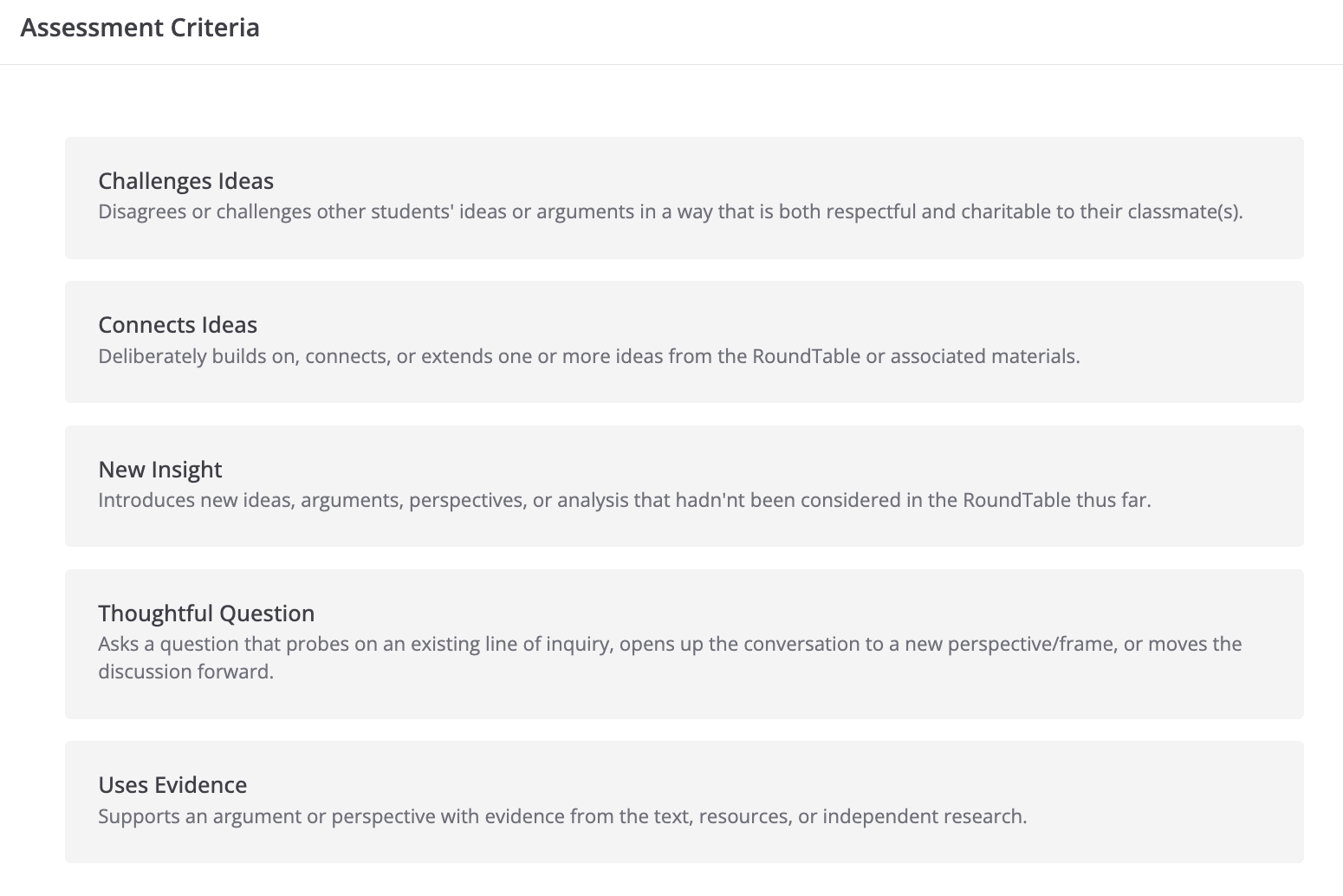
As a teacher, you can still design and customize the assessment criteria based on your curriculum.
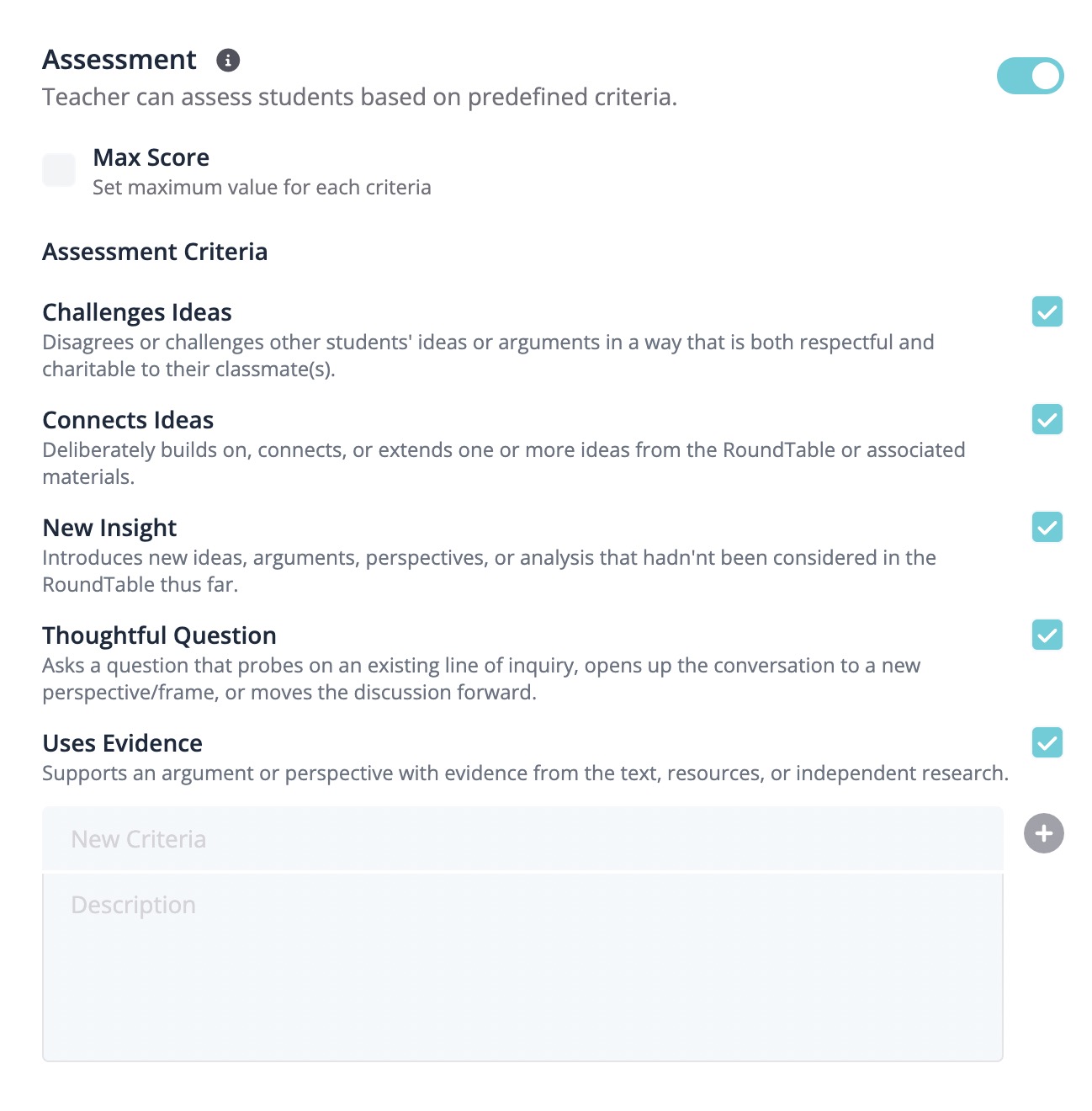
What is the Harkness Method?
Background
The Harkness Method is a teaching philosophy that sprung from the Phillips Exeter Academy in the 1930s after receiving a large donation from a philanthropist, Mr. Edward Harkness. The collaborative and student-driven teaching practice would become known as The Harkness Method.
Why Harkness?
The goal of the Harkness Method is to have students apply their knowledge of the content through asking thoughtful questions and challenging each other's ideas in a respectful manner.
With this philosophy, teachers and students come together to discuss ideas and events shaping the world, and apply these concepts to the core curriculum.
Ultimately, this method puts the focus on developing the faculties of critical thinking, communication, and collaboration.
How does it work?
Simply put, groups of students are gathered in a circle facing one another and posed with guiding discussion prompts.
The open-ended discussion prompt is designed to encourage multiple viewpoints and perspectives on a given real-world topic.
+ For more information on how you can use this method in your classroom, read this article to learn all the different ways you can incorporate Parlay into your instruction.
What's the teacher's role?
Students as leaders. Teachers as observers.
The teacher does not interfere with the discussion and allows students to guide it naturally. At certain points, the teacher may interject and provide new discussion prompts or redirect the discussion if necessary.
How do we assess discussions?
To assess using the Harkness method, a variety of visual strategies and aids are employed to help teachers identify the quality and quantity of the contributions to the discussion.
To assess, teachers traditionally use visual tally systems like chord diagrams to capture student participation.
The Parlay Approach
We also identify the key success criteria for the discussion activity. In addition to the 5 key skills-based criteria, teachers are able to customize additional assessment points based on their lesson.
Throughout the discussion, teachers give a tally for each time a student demonstrates the skill (i.e., offers new insight, challenges ideas, provides evidence, asks thoughtful questions, and connects ideas).
Easy!
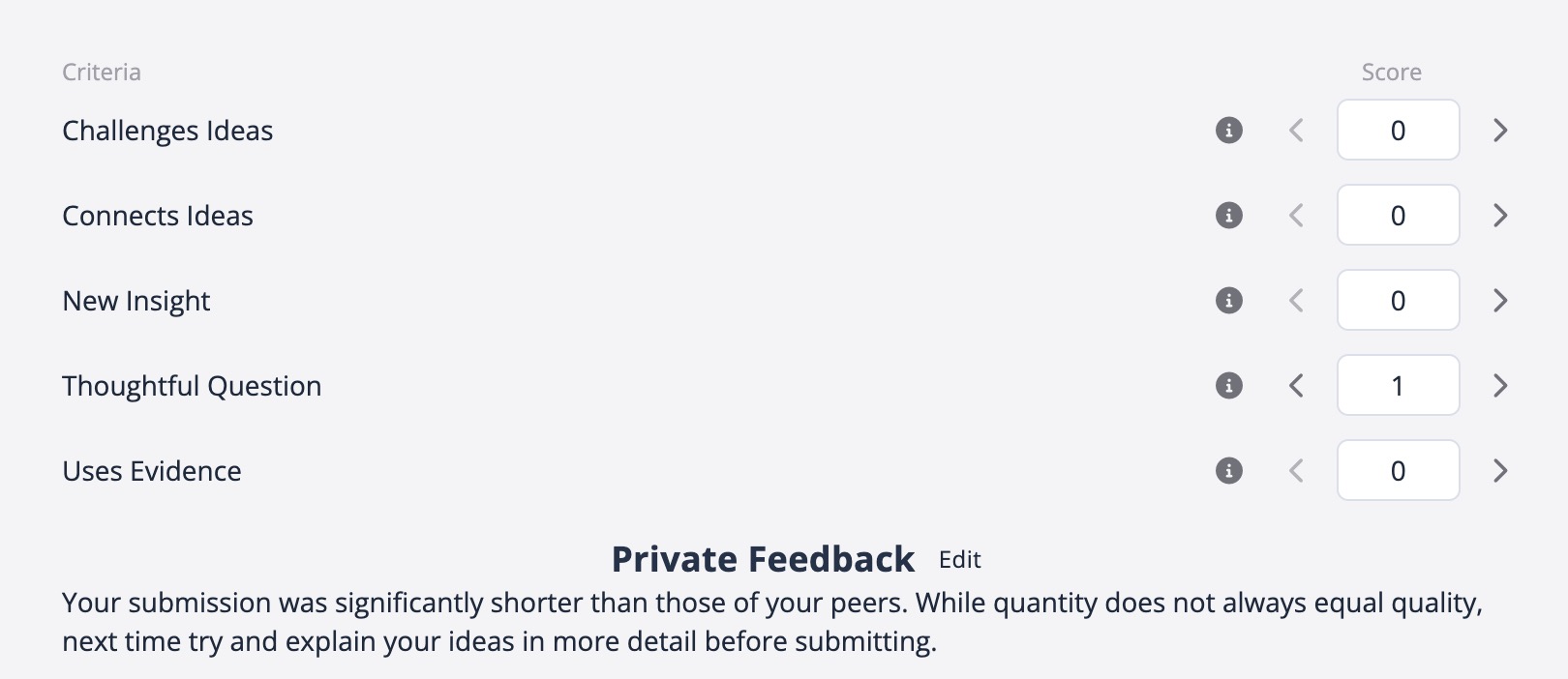
In Parlay, we have modified the traditional Harkness assessment protocols in our Summary page:
Chord Diagrams
Chord diagrams allow you to visualize the flow of the discussion between students. The more frequent the contributions are, the more chords that are created.
Written RoundTable
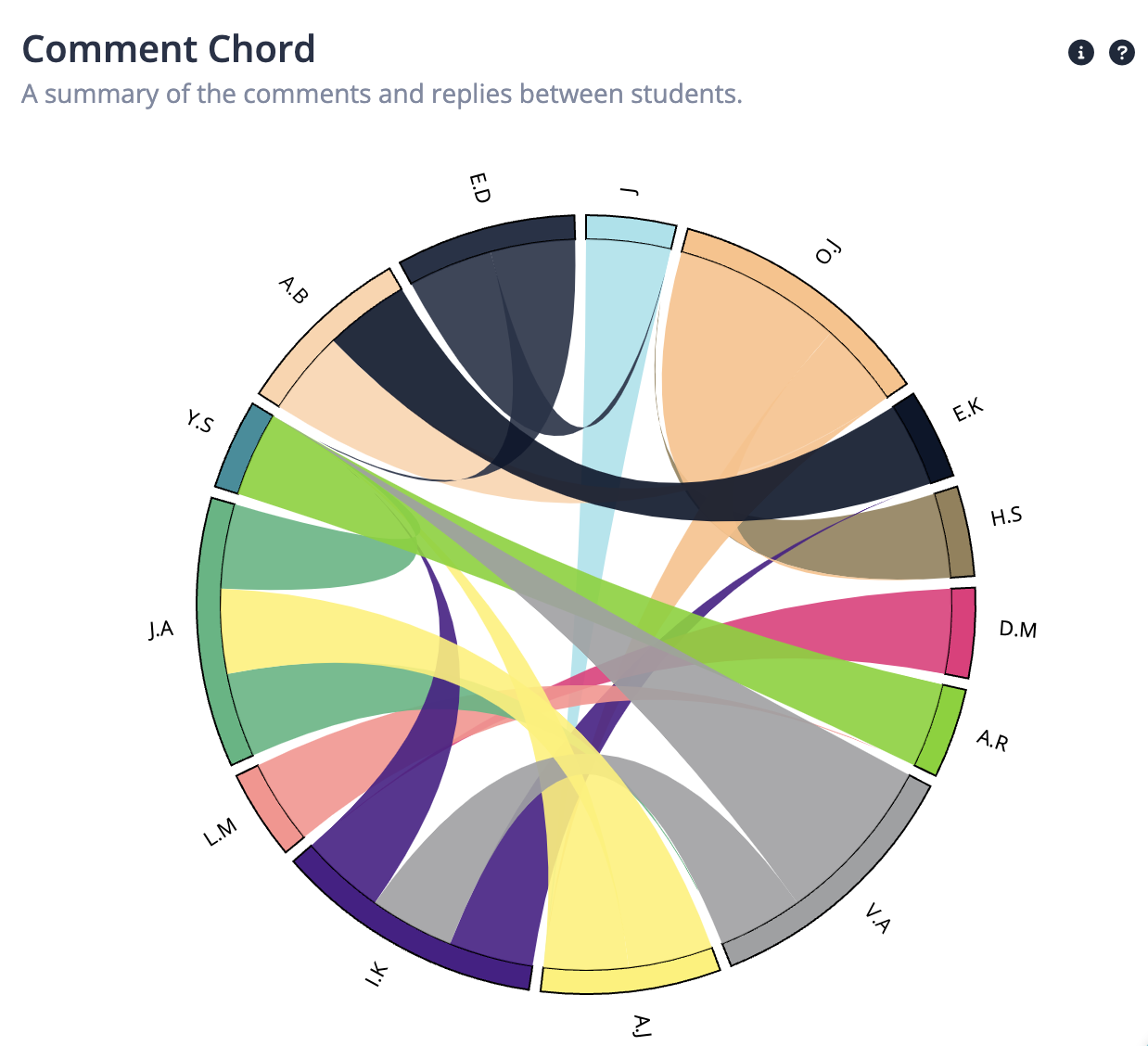
Verbal RoundTable
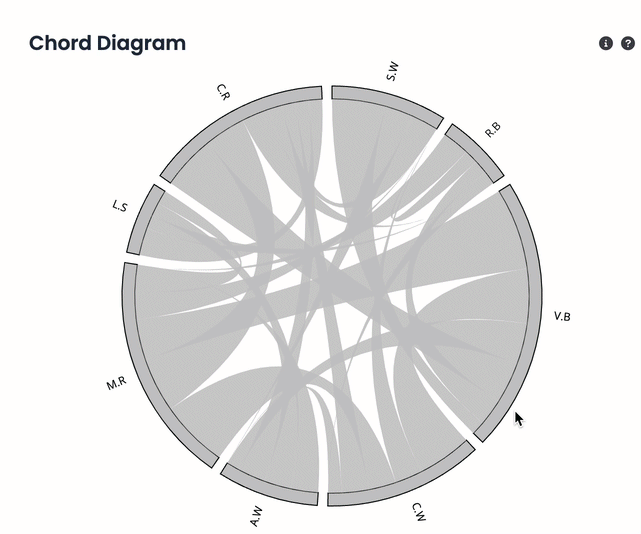
Participation Rate
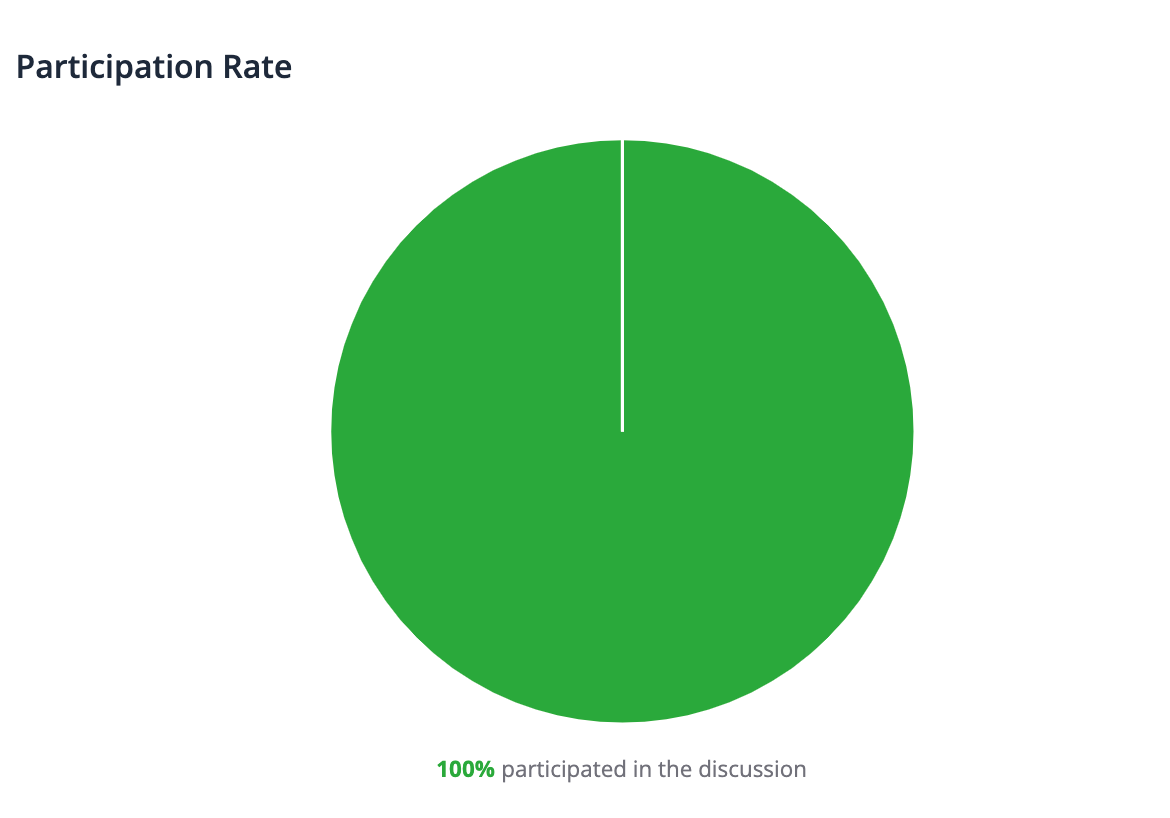
Time Spent Speaking
Parlay will track the amount of time that students are in the speaker position. This allows teachers to focus on active observation, as opposed to actively taking notes on verbal participation.

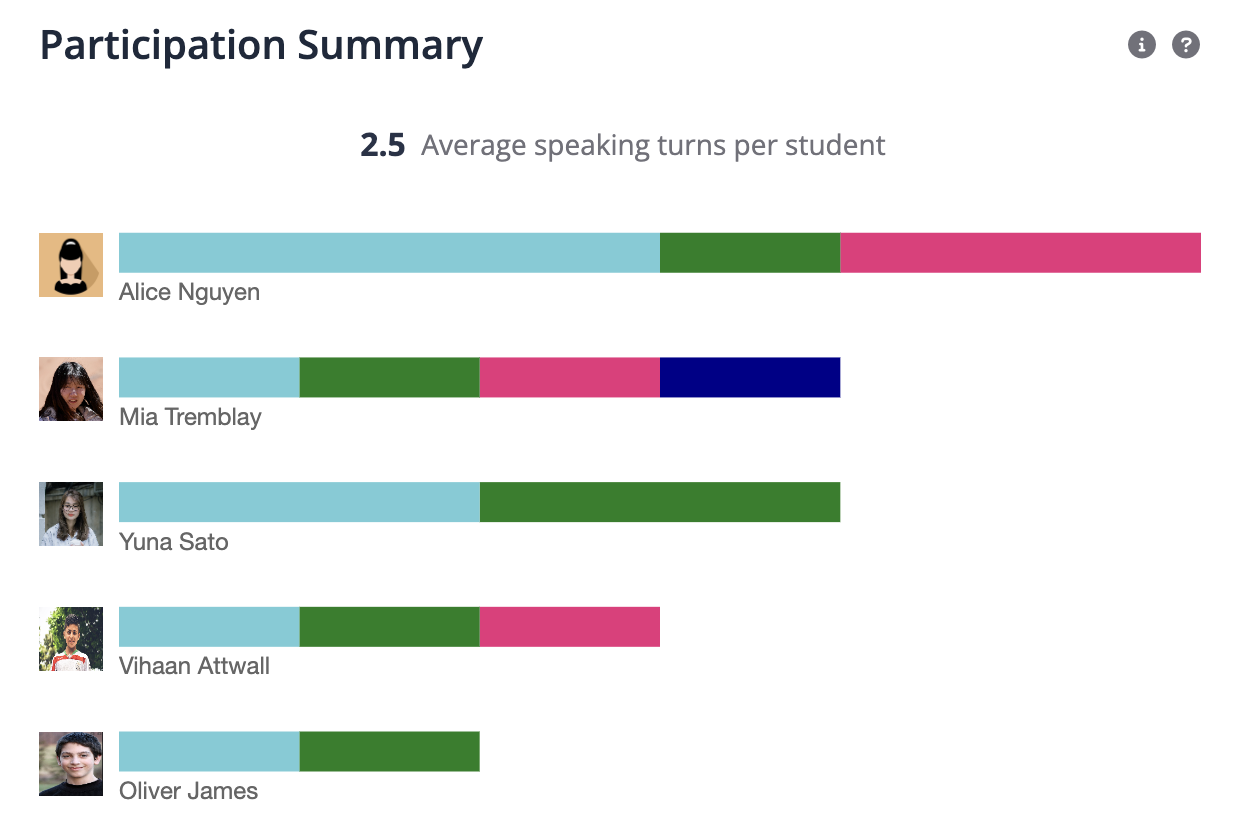
Comment Length
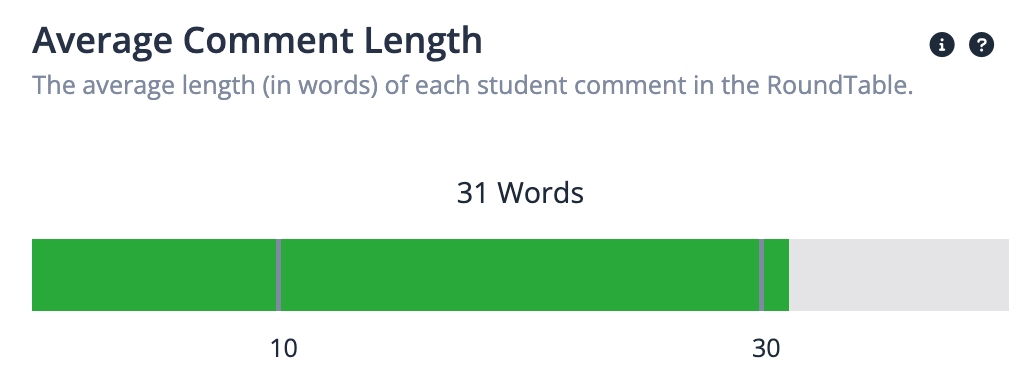
Keyword Cloud
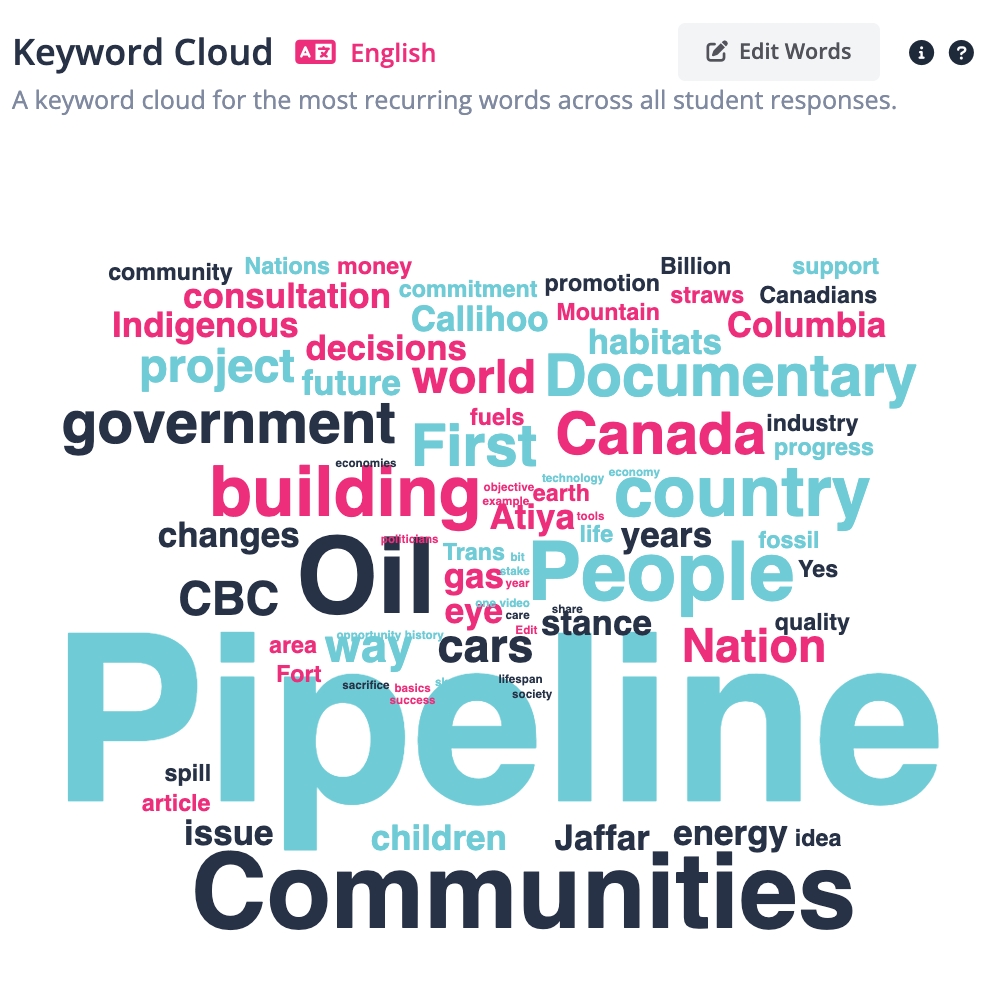
What do we do with all this data?
All student assessments will be compiled, tracked, and visualized for your records. Over time, you will be able to see trends in student achievement and participation.
Student Reports
In the Summary section of the Student Reports page, you will be able to see trends over time for each student. You can compare student achievement to the class-wide averages and filter by a specific skill.
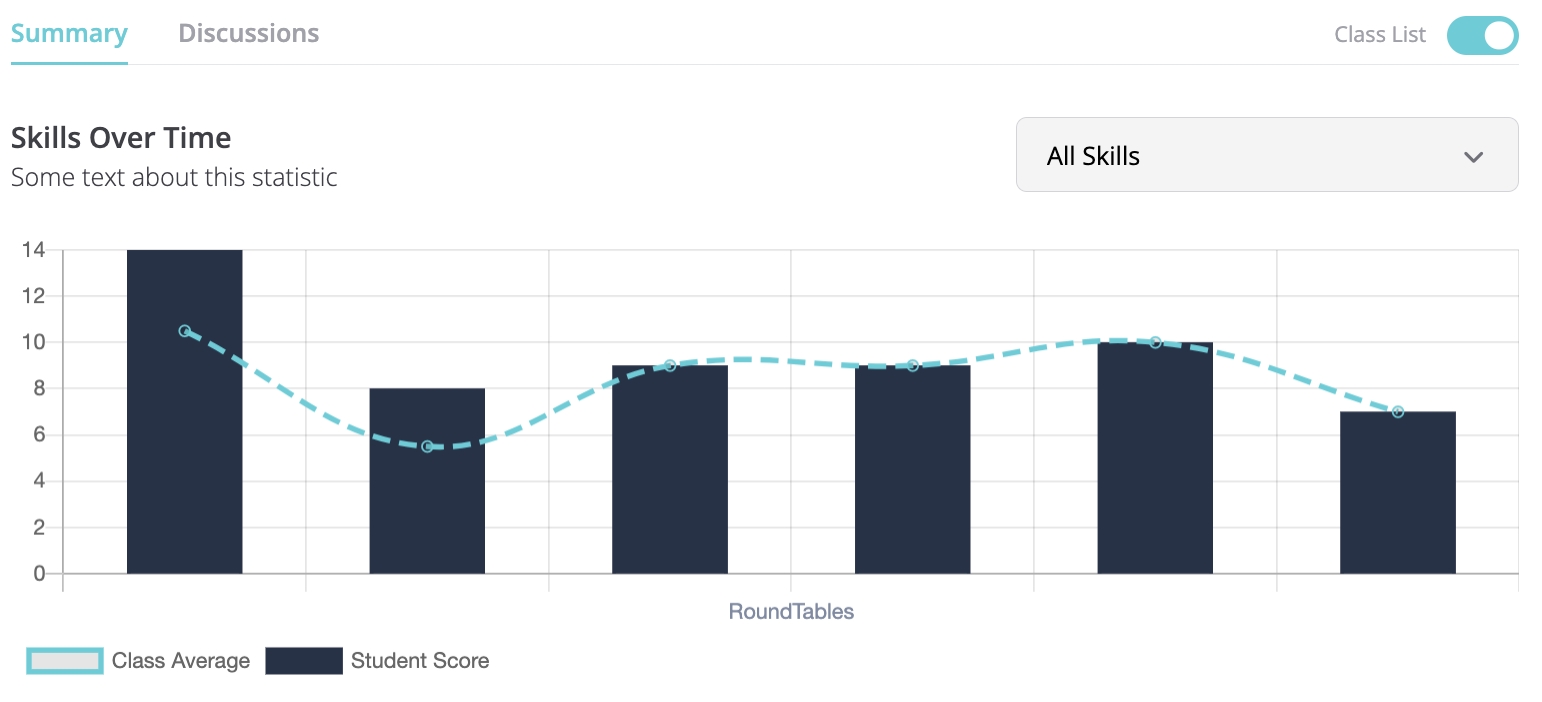
Parlay compiles the data from each of the Written and Verbal RoundTables in your course and provides a visual breakdown of each student's engagement data. Here, you can also compare each student's contributions to the class-wide average.
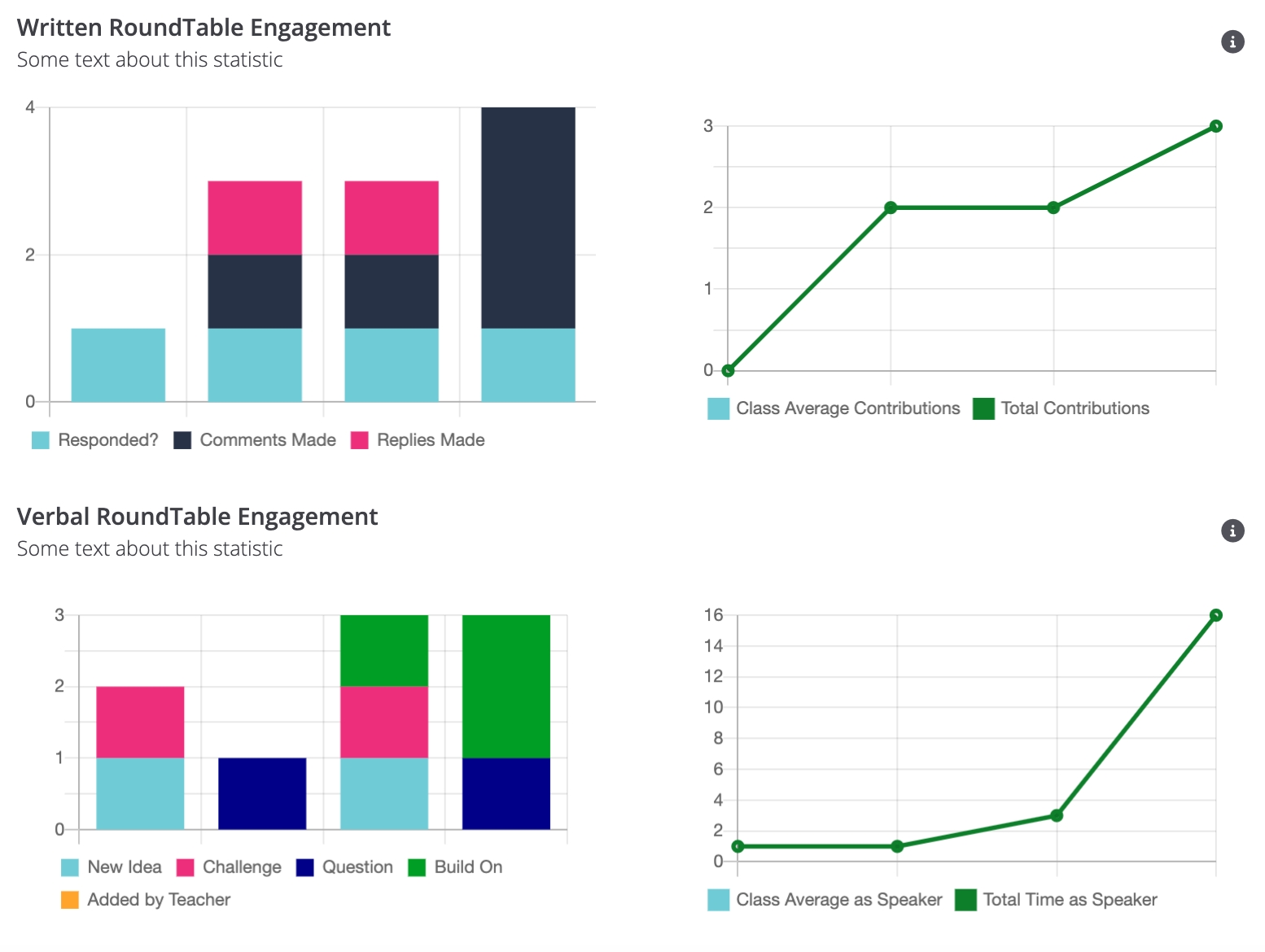
That's all!